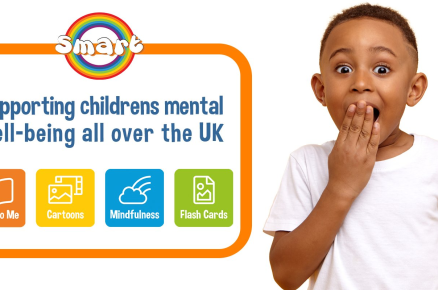16th June is the Neurodiversity Pride Day. A day that I have lately learned about and that honours the achievements that the neurodivergent community has made to society. I wanted to write and share my observations and learnings after sharing some of my neurodivergent story. The journey to entrepreneurship on a panel with my former university a few weeks ago. It’s been a transformative experience for me. I could not think of a better day to publish this than today, with a focus on self-acceptance and support for individuals who are perhaps exposing and “dropping the mask” for the first time.
It has been a difficult journey of self-discovery, but over the past few years, I have understood how I perform and what I need to do to perform at my best. I have known for a long time that I am neurodivergent, and although I had previously concealed my dyslexia. I also discovered that typical work contexts, mostly, unhealthy or extremely depleting of my energy, but for a long time, I was unsure of why or what to do about it. I’ve been on a mission to remodel my career and establish a work environment that complements my neurodivergent preferences and strengths, especially during the last year.
I have included a selection of relevant sites and information that have directly influenced my path in the remaining sections of the article. It’s my goal that these reflections may be helpful to those travelling similar routes of self-discovery. They will act as a manual for promoting support and inclusivity in every aspect of the mind.
The latest knowledge about neurodivergent brains
It is crucial to begin this guide with a summary of the state of affairs and the present understanding of neurodiversity and neurodivergent brains.
A neurological profile that differs from the prevalent or “neurotypical” norm is referred to as neurodivergent. It includes people with distinct cognitive styles and thought processes, as well as illnesses including autism, ADHD, dyslexia, and others.
The term “neurodiversity” refers to the idea that people’s neurological characteristics and cognitive capacities naturally differ from person to person. It recognises that neurological variances, rather than being biologically disordered or defective disorders, are merely variations of the human brain, including dyslexia, autism, ADHD, and other conditions.
The power of Neurodiversity points out the significance of comprehending, embracing, and accommodating persons with heterogeneous neurocognitive profiles, fighting for inclusivity. It’s appreciating the different benefits and viewpoints that every brain contributes to a wider society.
The last few years have seen a significant shift in our knowledge of neurodivergent brains. Which includes dyslexia, ADHD, and autism, among other conditions. The understanding that neurodivergent disorders, like autism and ADHD, are not unique to men and that they present differently in women is one notable area of improvement.
The Eight Fundamentals of Neurodiversity
The human brain is not so much a machine as it is an ecosystem.
Until now, the brain has most frequently been compared to a computer (or other form of device). But the human brain is wetware, not hardware or software. It is far more accurate to describe the brain as an astonishingly complex network of ecosystems rather than as a sophisticated mechanism. We ought to craft a discourse that more accurately represents this updated understanding of the brain.
Our brains exist on competency continuums.
Speaking of competency spectrums or continuums is more suitable than categorising people with disabilities into specific groups. For example, recent studies suggest that dyslexia is a component of a spectrum that includes typical reading skills. We refer to various degrees of social competence that eventually blend into typical behaviour. When we use phrases like autism spectrum diseases. This implies that rather than being divided into categories. Such as “normal” and “those with disabilities,” all of us are connected along continuums relating to literacy, sociability, focus, memory, and other cognitive talents.
Read The Crucial Importance of Mental Health During University Studies.
The principles of the cultural group to which you belong define human competence- Power of Neurodiversity
Disability categories frequently reveal a lot about a culture’s ideals. For instance, dyslexia is founded on the social norm that all people should be literate. This wasn’t the case, and dyslexia wasn’t even a thing 125 years ago. In a similar vein, autism might reflect the societal belief that being in a relationship is preferable to being alone.
The perception of oneself as gifted or disabled primarily depends on one’s birth and place- Power of Neurodiversity
Different eras and locations have made different disability and ability diagnoses depending on cultural norms. For example, people believed that “tryptamine” was a disorder that afflicted black Americans before the American Civil War. Its definition, which revealed its racial origins, was “an obsession with the urge to flee one’s secondary masters.” There are people in India today who the locals consider to be divine creatures. But who would be classified as schizophrenic in the Western world.
Read The Impact of Sleep Deprivation on Nutrition and Overall Health.
The secret to success in life is to train your brain to adapt to the requirements of your environment.
We don’t live in different eras or places, regardless of Principles 3 and 4. So the urgent necessity is to adjust to our modern society. This implies that someone who has dyslexia has to learn how to read. Someone who is autistic needs to develop social skills, someone who has schizophrenia needs to think more clearly, and so on. These goals can be met with the aid of instruments like psychoactive drugs or intense remedial programmes.
Adjusting your surrounding environment to your specific brain’s needs is another key to success in life- Power of Neurodiversity
It’s not appropriate to devote all of our attention to helping a neurodiverse individual fit in with their surroundings. It’s analogous to trying to squeeze a round peg into a square hole. We should also come up with strategies for assisting a person in modifying their immediate surroundings to better suit their particular brain’s requirements.
Career and lifestyle selections, assistive technologies, human resources, and other life. Enhancing strategies adapted to the particular requirements of a neurodiverse person are all included in niche construction.
Changing the surroundings to better suit the requirements of a neurodiverse brain is possible with a variety of instruments, materials, and approaches. For example, someone with ADHD can work in a field that requires mobility and novelty. They use an iPhone to help organise his schedule and engage a coach to help him improve his social skills.
Positive niche construction, which improves the brain’s capacity for environmental adaptation, directly changes the brain- Neurodiversity
Researchers have shown that a more stimulating environment in mice leads to a more intricate web of connections between neurons in the brain. This more sophisticated brain finds it simpler to adjust to the demands of its surroundings.
Relevant topic Mental health issues in children are on the rise in the UK.






